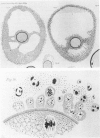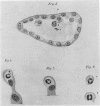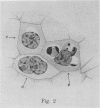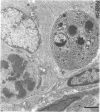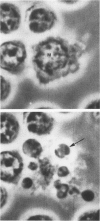Abstract
The historical development of the cell death concept is reviewed, with special attention to the origin of the terms necrosis, coagulation necrosis, autolysis, physiological cell death, programmed cell death, chromatolysis (the first name of apoptosis in 1914), karyorhexis, karyolysis, and cell suicide, of which there are three forms: by lysosomes, by free radicals, and by a genetic mechanism (apoptosis). Some of the typical features of apoptosis are discussed, such as budding (as opposed to blebbing and zeiosis) and the inflammatory response. For cell death not by apoptosis the most satisfactory term is accidental cell death. Necrosis is commonly used but it is not appropriate, because it does not indicate a form of cell death but refers to changes secondary to cell death by any mechanism, including apoptosis. Abundant data are available on one form of accidental cell death, namely ischemic cell death, which can be considered an entity of its own, caused by failure of the ionic pumps of the plasma membrane. Because ischemic cell death (in known models) is accompanied by swelling, the name oncosis is proposed for this condition. The term oncosis (derived from ónkos, meaning swelling) was proposed in 1910 by von Reckling-hausen precisely to mean cell death with swelling. Oncosis leads to necrosis with karyolysis and stands in contrast to apoptosis, which leads to necrosis with karyorhexis and cell shrinkage.
Full text
PDF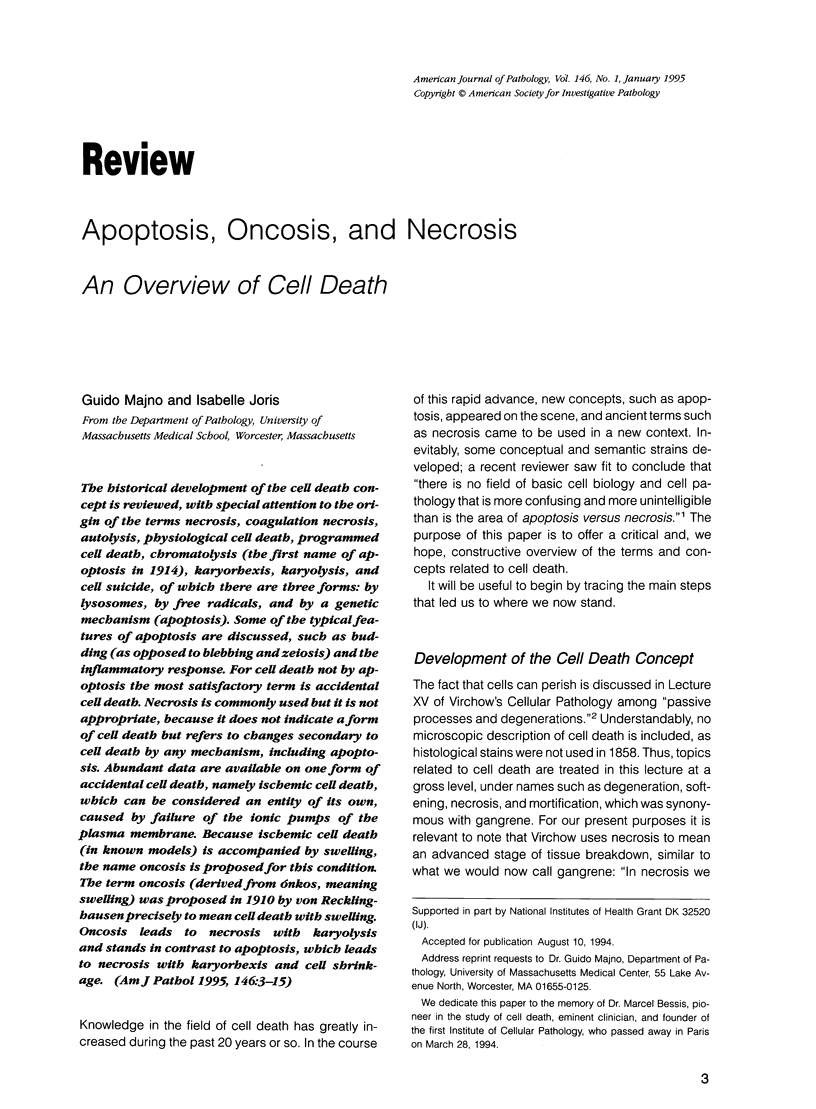
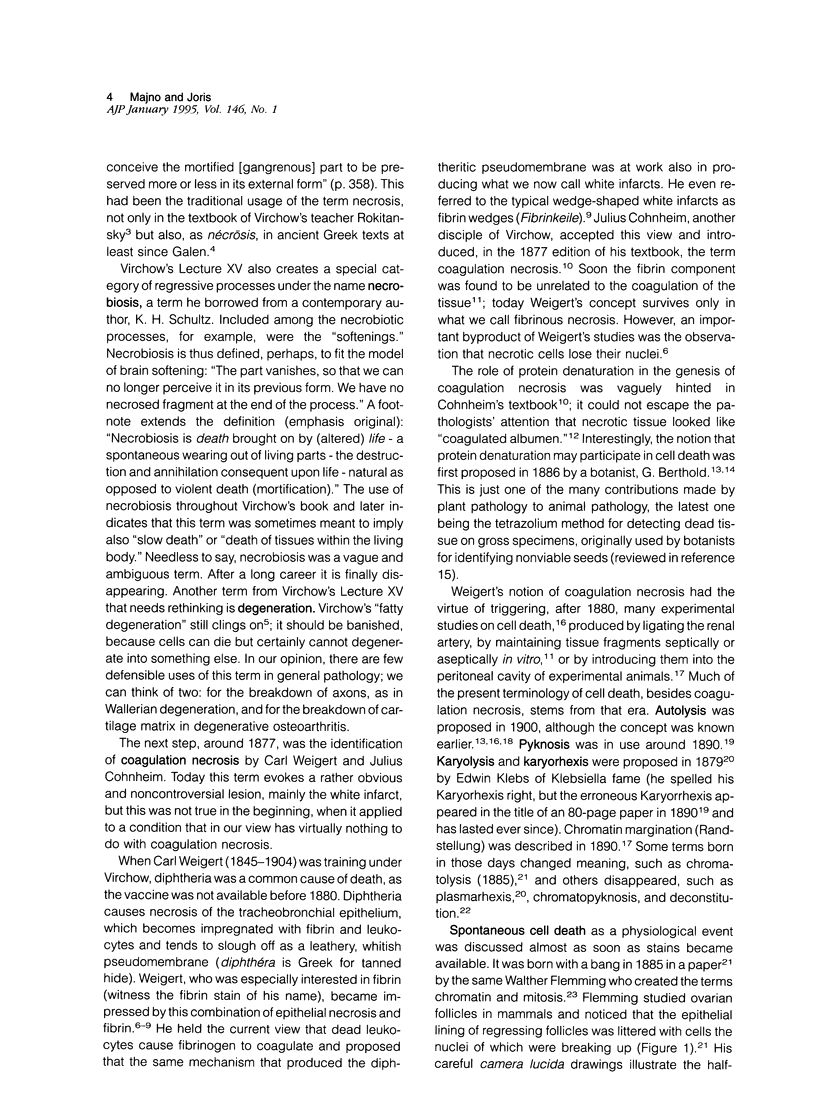
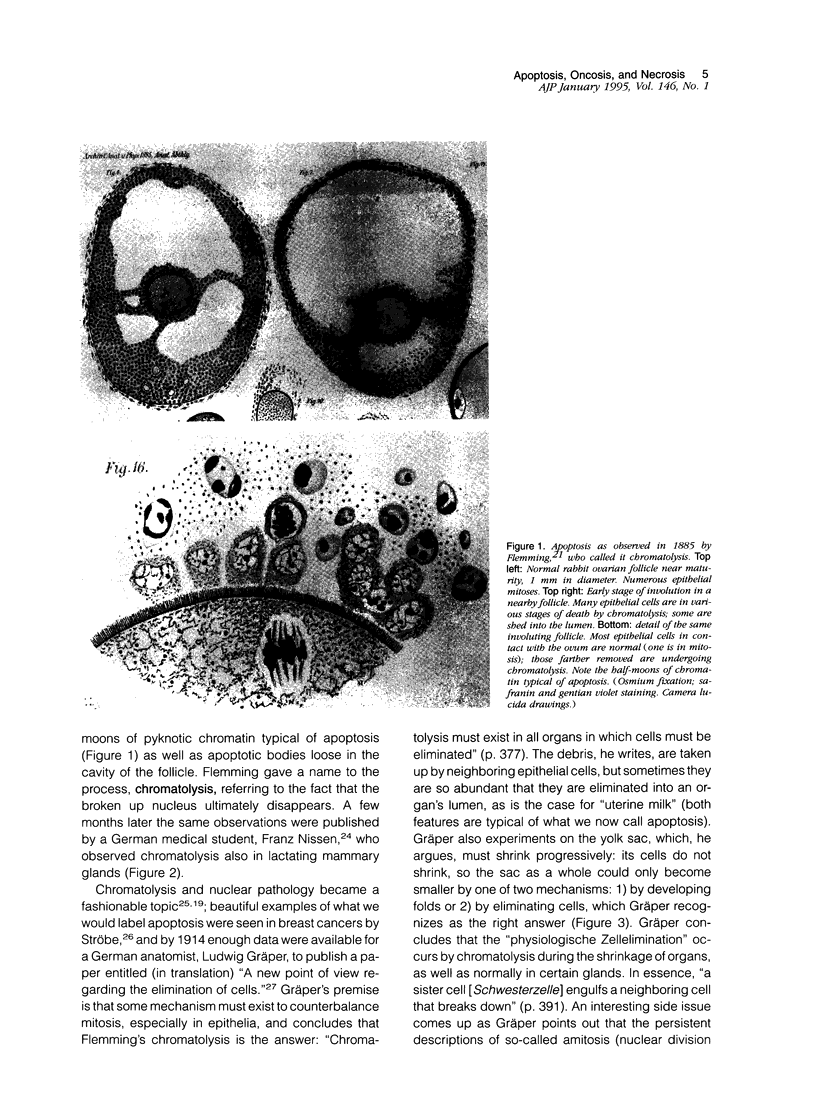
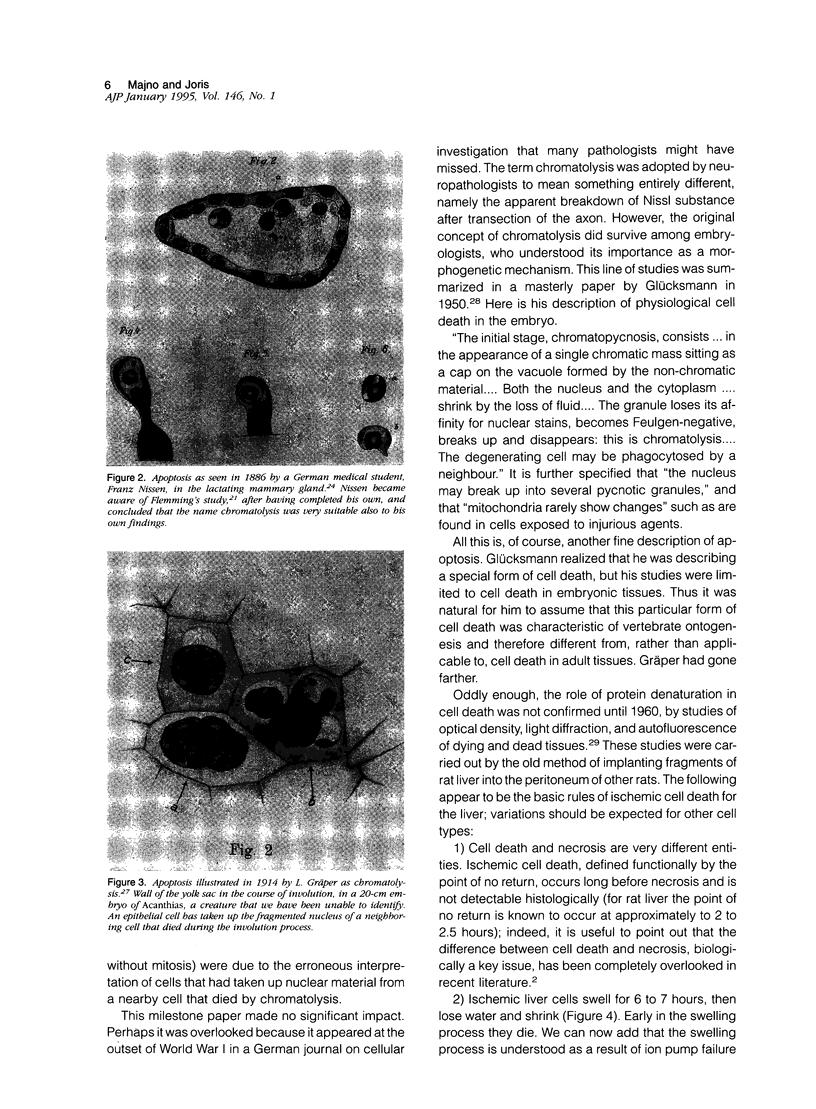
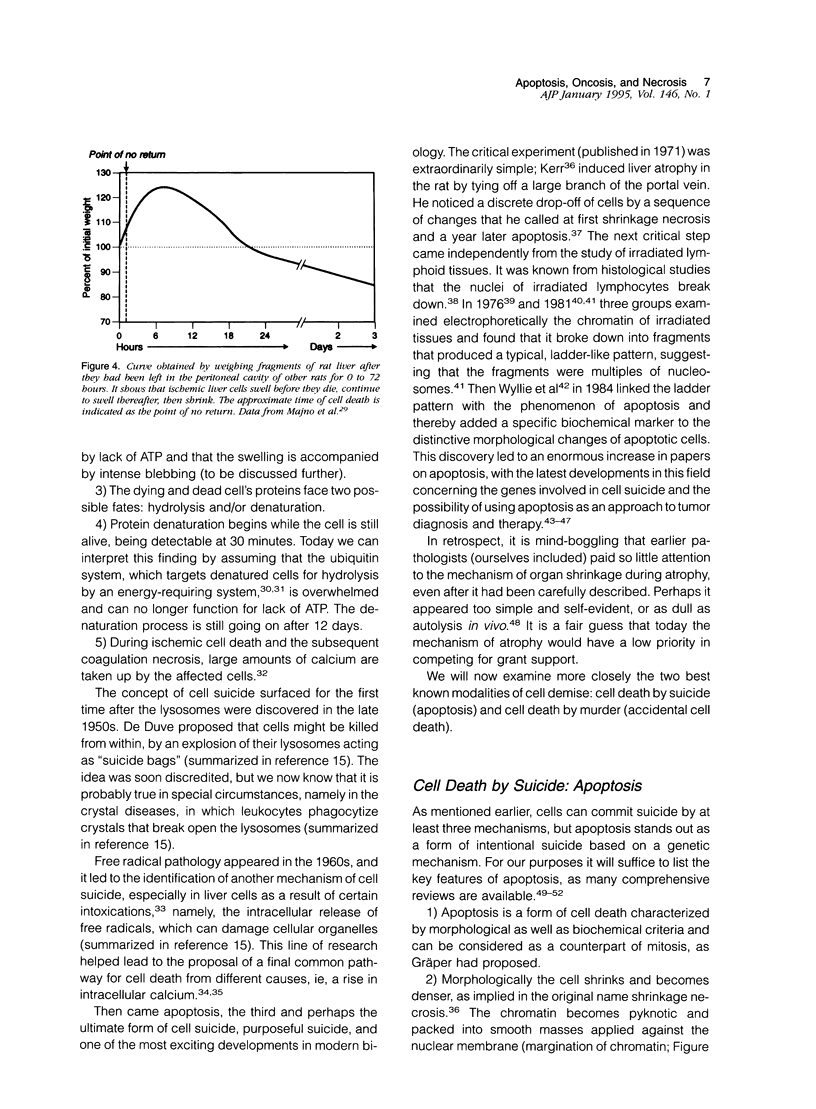
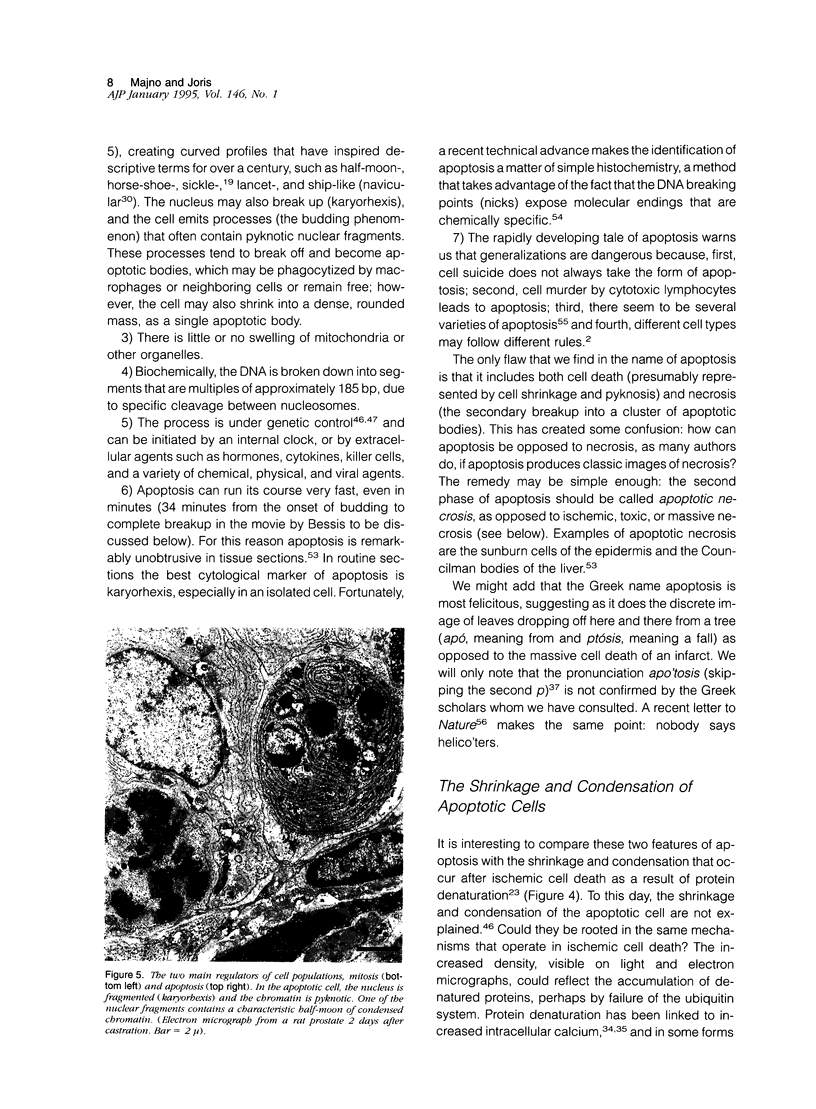
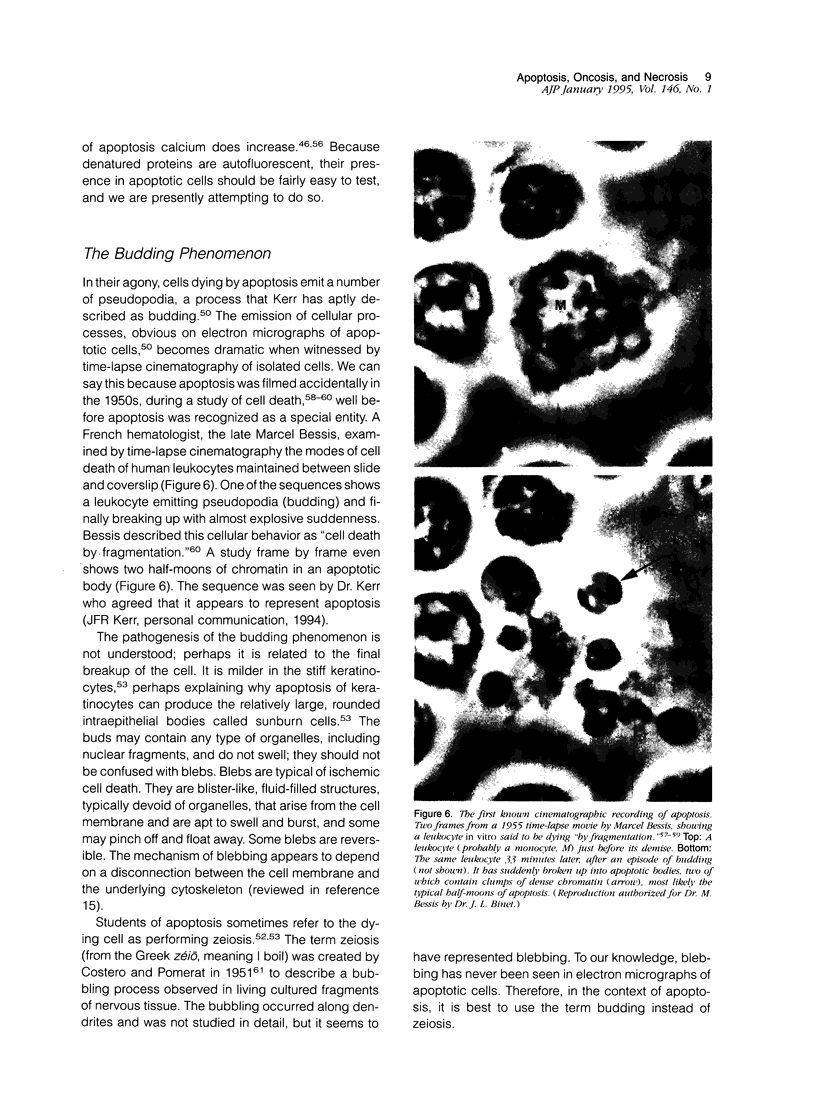
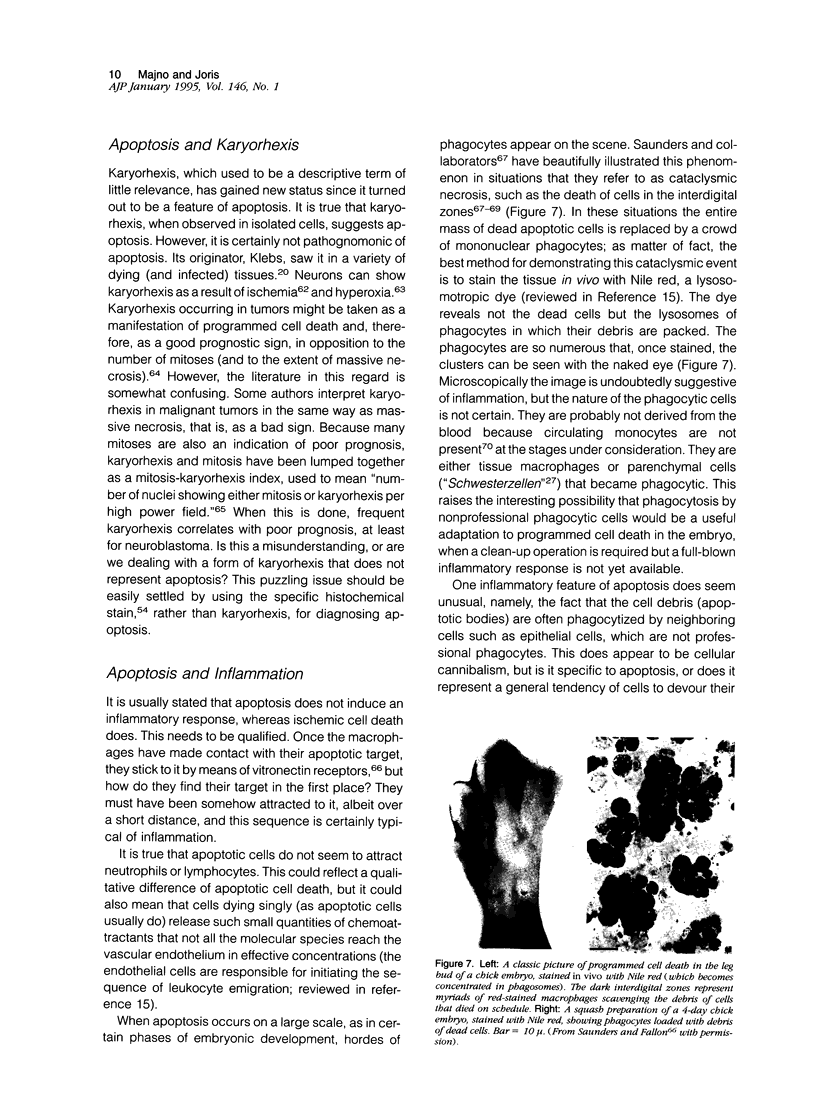
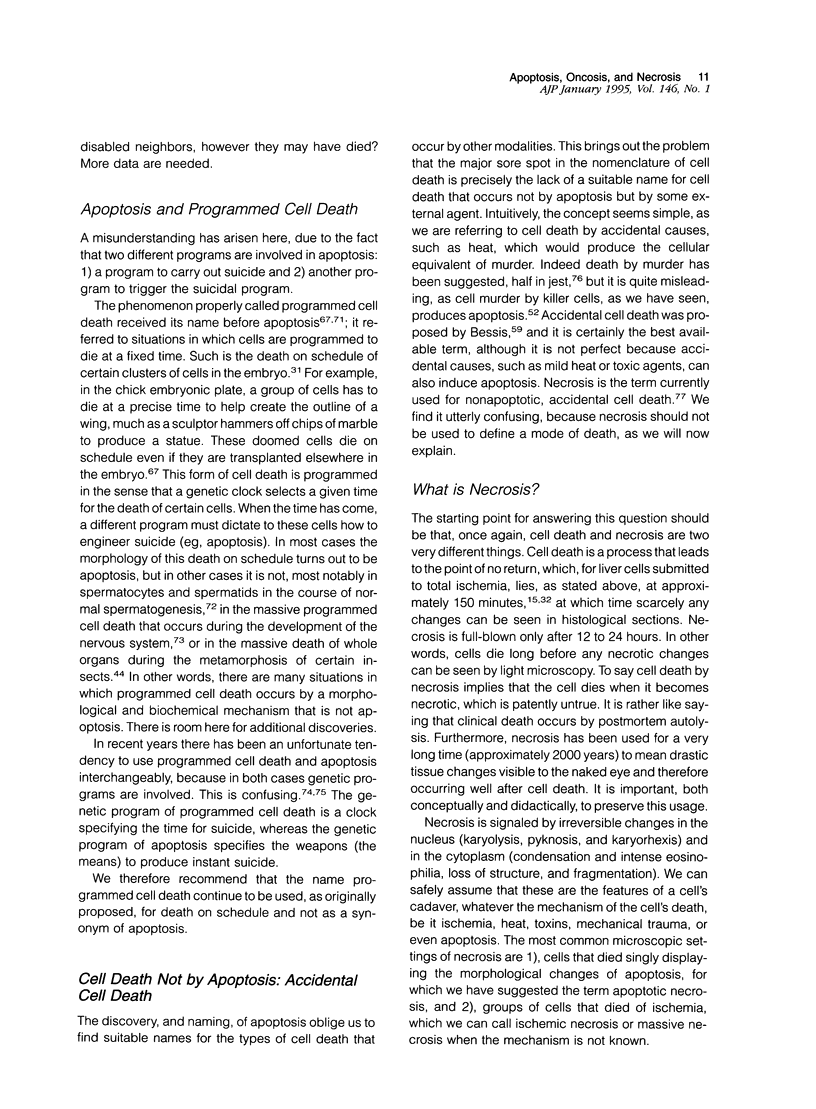
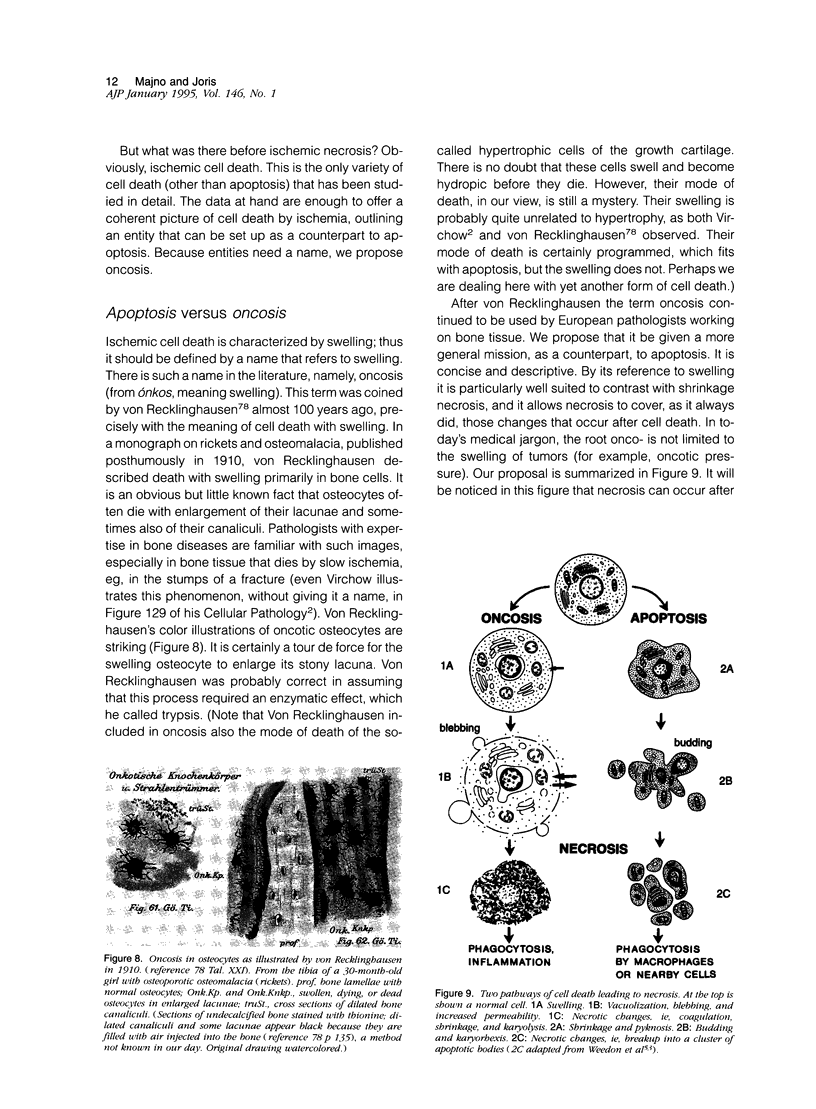
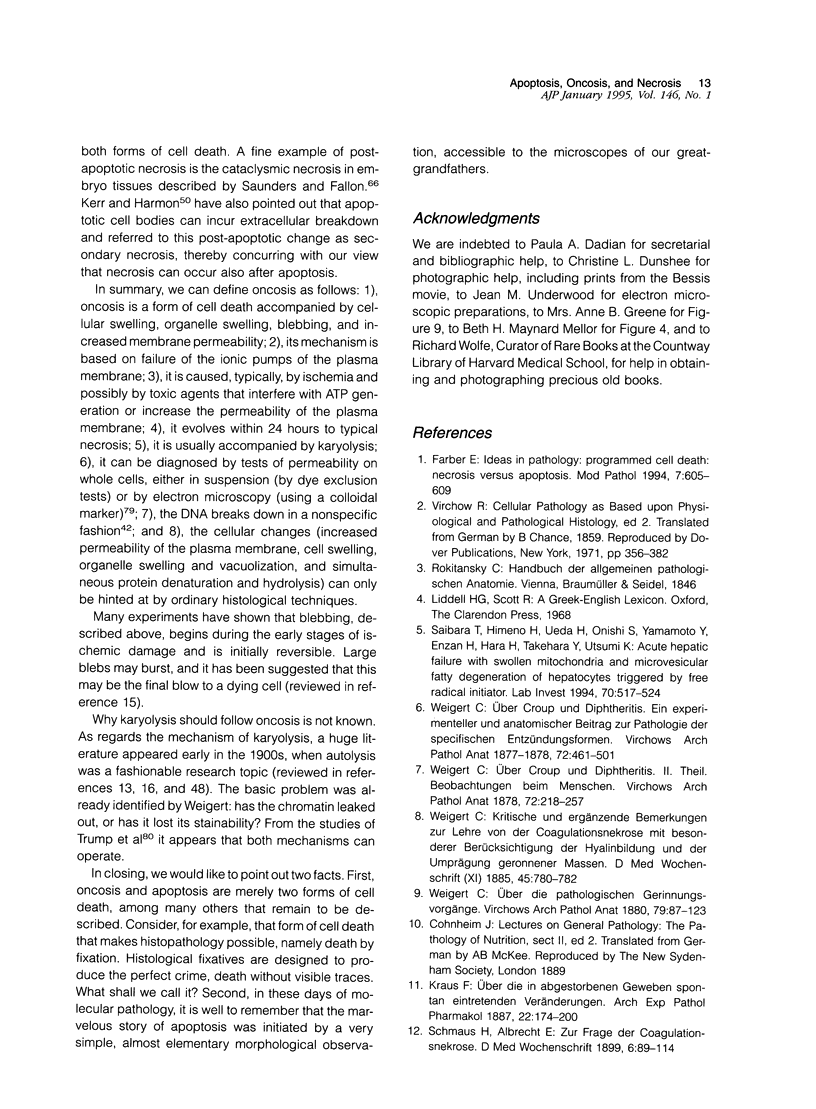
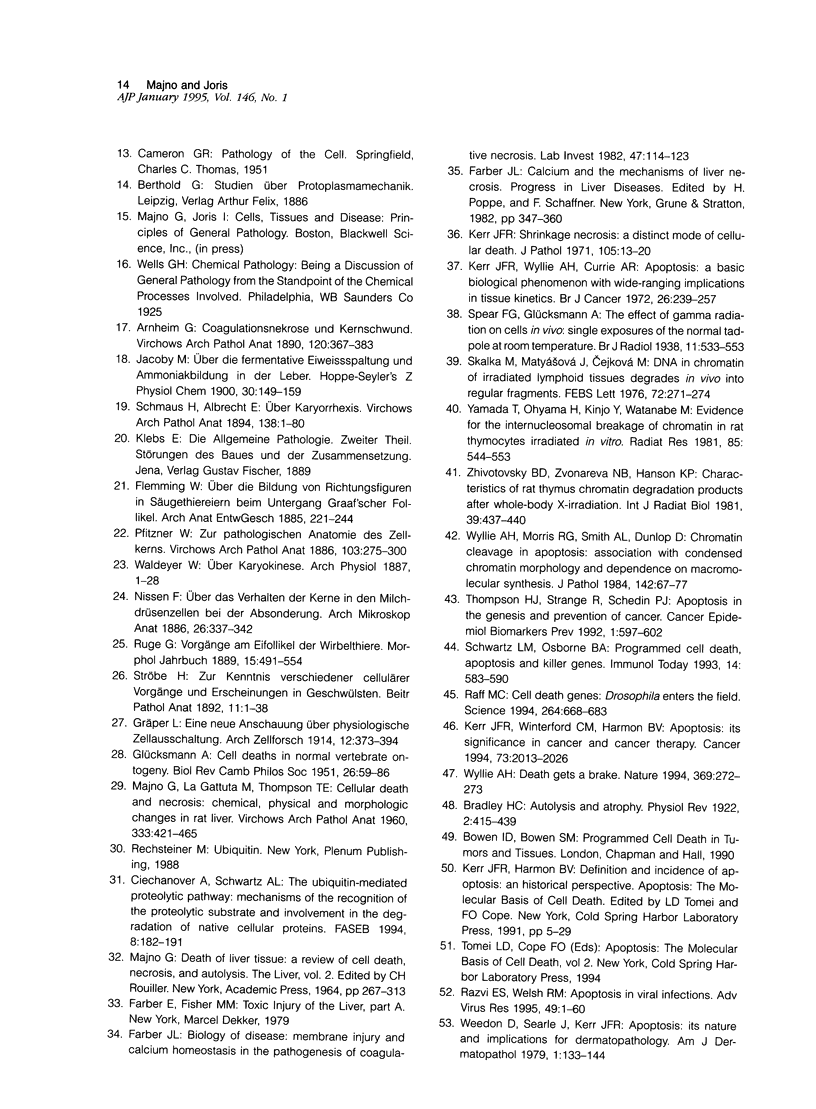
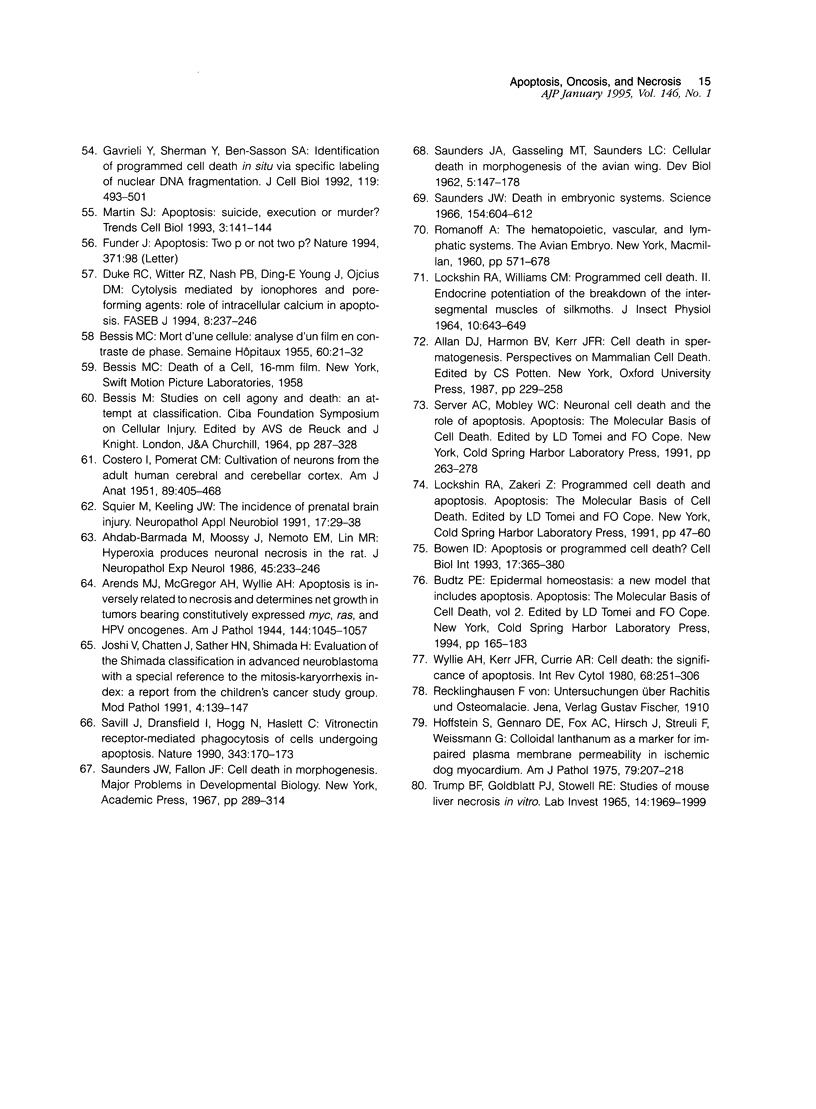
Images in this article
Selected References
These references are in PubMed. This may not be the complete list of references from this article.
- Ahdab-Barmada M., Moossy J., Nemoto E. M., Lin M. R. Hyperoxia produces neuronal necrosis in the rat. J Neuropathol Exp Neurol. 1986 May;45(3):233–246. [PubMed] [Google Scholar]
- Arends M. J., McGregor A. H., Wyllie A. H. Apoptosis is inversely related to necrosis and determines net growth in tumors bearing constitutively expressed myc, ras, and HPV oncogenes. Am J Pathol. 1994 May;144(5):1045–1057. [PMC free article] [PubMed] [Google Scholar]
- Bowen I. D. Apoptosis or programmed cell death? Cell Biol Int. 1993 Apr;17(4):365–380. doi: 10.1006/cbir.1993.1075. [DOI] [PubMed] [Google Scholar]
- COSTERO I., POMERAT C. M. Cultivation of neurons from the adult human cerebral and cerebellar cortes. Am J Anat. 1951 Nov;89(3):405–467. doi: 10.1002/aja.1000890304. [DOI] [PubMed] [Google Scholar]
- Ciechanover A., Schwartz A. L. The ubiquitin-mediated proteolytic pathway: mechanisms of recognition of the proteolytic substrate and involvement in the degradation of native cellular proteins. FASEB J. 1994 Feb;8(2):182–191. doi: 10.1096/fasebj.8.2.8119489. [DOI] [PubMed] [Google Scholar]
- Duke R. C., Witter R. Z., Nash P. B., Young J. D., Ojcius D. M. Cytolysis mediated by ionophores and pore-forming agents: role of intracellular calcium in apoptosis. FASEB J. 1994 Feb;8(2):237–246. doi: 10.1096/fasebj.8.2.8119494. [DOI] [PubMed] [Google Scholar]
- Farber E. Programmed cell death: necrosis versus apoptosis. Mod Pathol. 1994 Jun;7(5):605–609. [PubMed] [Google Scholar]
- Farber J. L. Biology of disease: membrane injury and calcium homeostasis in the pathogenesis of coagulative necrosis. Lab Invest. 1982 Aug;47(2):114–123. [PubMed] [Google Scholar]
- Gavrieli Y., Sherman Y., Ben-Sasson S. A. Identification of programmed cell death in situ via specific labeling of nuclear DNA fragmentation. J Cell Biol. 1992 Nov;119(3):493–501. doi: 10.1083/jcb.119.3.493. [DOI] [PMC free article] [PubMed] [Google Scholar]
- Hoffstein S., Gennaro D. E., Fox A. C., Hirsch J., Streuli F., Weissmann G. Colloidal lanthanum as a marker for impaired plasma membrane permeability in ischemic dog myocardium. Am J Pathol. 1975 May;79(2):207–218. [PMC free article] [PubMed] [Google Scholar]
- Joshi V. V., Chatten J., Sather H. N., Shimada H. Evaluation of the Shimada classification in advanced neuroblastoma with a special reference to the mitosis-karyorrhexis index: a report from the Childrens Cancer Study Group. Mod Pathol. 1991 Mar;4(2):139–147. [PubMed] [Google Scholar]
- Kerr J. F. Shrinkage necrosis: a distinct mode of cellular death. J Pathol. 1971 Sep;105(1):13–20. doi: 10.1002/path.1711050103. [DOI] [PubMed] [Google Scholar]
- Kerr J. F., Winterford C. M., Harmon B. V. Apoptosis. Its significance in cancer and cancer therapy. Cancer. 1994 Apr 15;73(8):2013–2026. doi: 10.1002/1097-0142(19940415)73:8<2013::aid-cncr2820730802>3.0.co;2-j. [DOI] [PubMed] [Google Scholar]
- Kerr J. F., Wyllie A. H., Currie A. R. Apoptosis: a basic biological phenomenon with wide-ranging implications in tissue kinetics. Br J Cancer. 1972 Aug;26(4):239–257. doi: 10.1038/bjc.1972.33. [DOI] [PMC free article] [PubMed] [Google Scholar]
- MAJNO G., LA GATTUTA M., THOMPSON T. E. Cellular death and necrosis: chemical, physical and morphologic changes in rat liver. Virchows Arch Pathol Anat Physiol Klin Med. 1960;333:421–465. doi: 10.1007/BF00955327. [DOI] [PubMed] [Google Scholar]
- Martin S. J. Apoptosis: suicide, execution or murder? Trends Cell Biol. 1993 May;3(5):141–144. doi: 10.1016/0962-8924(93)90128-n. [DOI] [PubMed] [Google Scholar]
- Raff M. C. Cell death genes: Drosophila enters the field. Science. 1994 Apr 29;264(5159):668–669. doi: 10.1126/science.8171317. [DOI] [PubMed] [Google Scholar]
- Razvi E. S., Welsh R. M. Apoptosis in viral infections. Adv Virus Res. 1995;45:1–60. doi: 10.1016/s0065-3527(08)60057-3. [DOI] [PubMed] [Google Scholar]
- SAUNDERS J. W., Jr, GASSELING M. T. Cellular death in morphogenesis of the avian wing. Dev Biol. 1962 Aug;5:147–178. doi: 10.1016/0012-1606(62)90008-8. [DOI] [PubMed] [Google Scholar]
- Saibara T., Himeno H., Ueda H., Onishi S., Yamamoto Y., Enzan H., Hara H., Takehara Y., Utsumi K. Acute hepatic failure with swollen mitochondria and microvesicular fatty degeneration of hepatocytes triggered by free radical initiator. Lab Invest. 1994 Apr;70(4):517–524. [PubMed] [Google Scholar]
- Saunders J. W., Jr Death in embryonic systems. Science. 1966 Nov 4;154(3749):604–612. doi: 10.1126/science.154.3749.604. [DOI] [PubMed] [Google Scholar]
- Savill J., Dransfield I., Hogg N., Haslett C. Vitronectin receptor-mediated phagocytosis of cells undergoing apoptosis. Nature. 1990 Jan 11;343(6254):170–173. doi: 10.1038/343170a0. [DOI] [PubMed] [Google Scholar]
- Schwartz L. M., Osborne B. A. Programmed cell death, apoptosis and killer genes. Immunol Today. 1993 Dec;14(12):582–590. doi: 10.1016/0167-5699(93)90197-S. [DOI] [PubMed] [Google Scholar]
- Skalka M., Matyásová J., Cejková M. Dna in chromatin of irradiated lymphoid tissues degrades in vivo into regular fragments. FEBS Lett. 1976 Dec 31;72(2):271–274. doi: 10.1016/0014-5793(76)80984-2. [DOI] [PubMed] [Google Scholar]
- Squier M., Keeling J. W. The incidence of prenatal brain injury. Neuropathol Appl Neurobiol. 1991 Feb;17(1):29–38. doi: 10.1111/j.1365-2990.1991.tb00691.x. [DOI] [PubMed] [Google Scholar]
- Thompson H. J., Strange R., Schedin P. J. Apoptosis in the genesis and prevention of cancer. Cancer Epidemiol Biomarkers Prev. 1992 Nov-Dec;1(7):597–602. [PubMed] [Google Scholar]
- Trump B. F., Goldblatt P. J., Stowell R. E. Studies of mouse liver necrosis in vitro. Ultrastructural and cytochemical alterations in hepatic parenchymal cell nuclei. Lab Invest. 1965 Nov;14(11):1969–1999. [PubMed] [Google Scholar]
- Weedon D., Searle J., Kerr J. F. Apoptosis. Its nature and implications for dermatopathology. Am J Dermatopathol. 1979 Summer;1(2):133–144. [PubMed] [Google Scholar]
- Wyllie A. H. Apoptosis. Death gets a brake. Nature. 1994 May 26;369(6478):272–273. doi: 10.1038/369272a0. [DOI] [PubMed] [Google Scholar]
- Wyllie A. H., Kerr J. F., Currie A. R. Cell death: the significance of apoptosis. Int Rev Cytol. 1980;68:251–306. doi: 10.1016/s0074-7696(08)62312-8. [DOI] [PubMed] [Google Scholar]
- Wyllie A. H., Morris R. G., Smith A. L., Dunlop D. Chromatin cleavage in apoptosis: association with condensed chromatin morphology and dependence on macromolecular synthesis. J Pathol. 1984 Jan;142(1):67–77. doi: 10.1002/path.1711420112. [DOI] [PubMed] [Google Scholar]
- Yamada T., Ohyama H., Kinjo Y., Watanabe M. Evidence for the internucleosomal breakage of chromatin in rat thymocytes irradiated in vitro. Radiat Res. 1981 Mar;85(3):544–553. [PubMed] [Google Scholar]
- Zhivotovsky B. D., Zvonareva N. B., Hanson K. P. Characteristics of rat thymus chromatin degradation products after whole-body x-irradiation. Int J Radiat Biol Relat Stud Phys Chem Med. 1981 Apr;39(4):437–440. doi: 10.1080/09553008114550531. [DOI] [PubMed] [Google Scholar]



